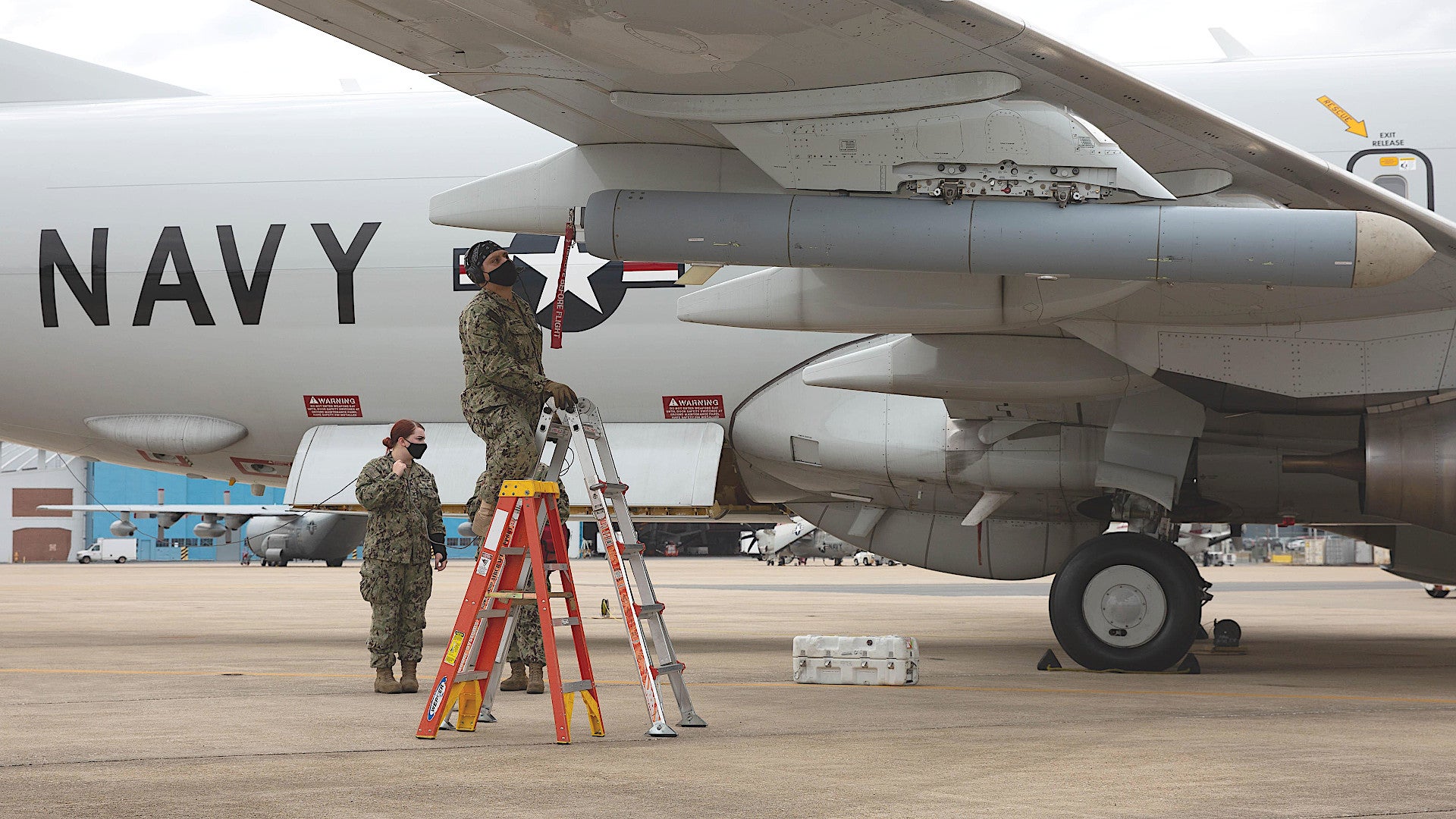The U.S. Navy recently tested a new podded self-protection system for the P-8A Poseidon maritime patrol plane. The pod, the outer shell of which is derived from the shape of the AGM-84 Harpoon anti-ship missile, is designed to release an AN/ALE-55 towed decoy capable of jamming enemy radars or luring incoming radar-homing missiles away from the aircraft. These pods, and the decoys inside them, often referred to as “little buddies,” could help improve the survivability of the service’s P-8As, especially during higher-end conflicts involving near-peer adversaries, such as China or Russia. The decoy system is just one of a number of efforts that the Navy, as well as the U.S. Air Force, have conducted in recent years exploring ways to add additional countermeasures capabilities to larger, non-stealthy aircraft.
A P-8A assigned to Air Test and Evaluation Squadron 20 (VX-20) out of Naval Air Station (NAS) Patuxent River in Maryland finished basic airworthiness testing of the pod out over the Navy’s Atlantic Test Ranges on March 12, 2021. The service then sent the system to Naval Air Weapons Station (NAWS) China Lake in California, where it successfully completed “effectiveness testing” on March 26. The plan is now to fully integrate the system onto the P-8A and field it operationally.
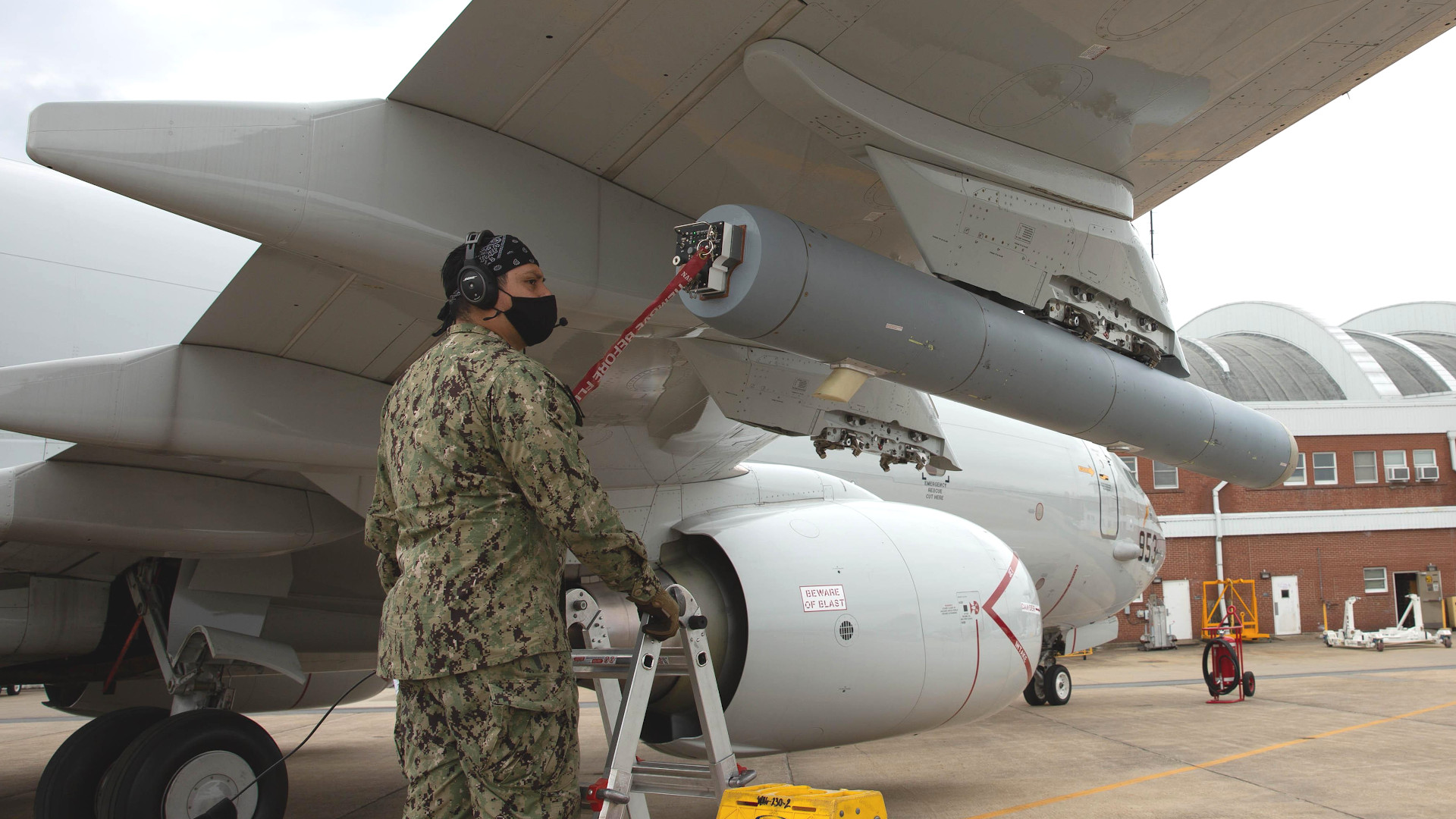
“This has the potential to be a game-changer for protecting the warfighter,” Navy Captain Eric Gardner, the Program Manager for the Maritime Patrol and Reconnaissance Aircraft Program Office within Naval Air Systems Command (NAVAIR), also known as PMA-290, said in a statement. “We continue to look for ways to enhance capabilities that allow the fleet to be successful.”
The development of the towed decoy pod was a collaborative effort between the Maritime Patrol and Reconnaissance Aircraft Program Office and NAVAIR’s Advanced Tactical Aircraft Protection Systems Program Office, as well as the Naval Air Warfare Center Aircraft Division’s (NAWCAD) Aircraft Prototype Systems Division (APSD) and Rapid Prototyping, Experimentation & Demonstration (RPED) team. BAE Systems, the manufacturer of the AN/ALE-55 decoy was also involved by way of a so-called Other Transaction Authority (OTA) deal, a contracting mechanism meant to support rapid prototyping and other research and development work. The actual funding for the project came from the Naval Innovative Science & Engineering (NISE) program.

“A lot of the challenge and effort went into designing, to our best estimates, for what BAE was expected to put in the pod,” Michael Hansell, the lead engineer on the project at APSD, said. “We had to adapt and redesign rapidly. We worked as fast as possible to support PMA-290 and RPED to make sure we could pivot and adjust to meet established timelines.”
From what can be seen of the pod in the pictures that the Navy has released, it is an AGM-84-shaped design with the decoy launcher mounted at the rear. Starting with the general form factor of the Harpoon, which the P-8A is already certified to carry, would have only helped in crafting a self-protection system that could be rapidly integrated onto the Poseidon.
The choice of the AN/ALE-55 also makes good sense as it is already in service on Navy F/A-18E/F Super Hornets. When deployed, the decoy trails behind the aircraft, towed by a fiber-optic line.
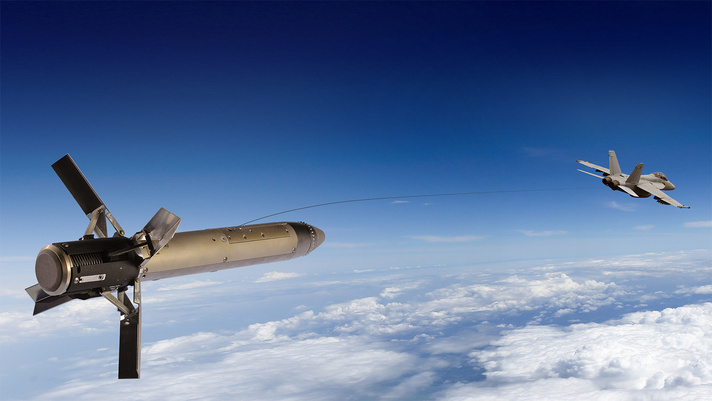
The AN/ALE-55 can scramble hostile emitters, such as enemy radars, to prevent them from locking onto the aircraft, or initiate electronic attacks to break an established lock. The decoy also has the ability to emit signals designed to lure incoming missiles away from the plane towing it. The system functions by way of a control unit, in this case mounted in the pod, that sends specific commands to the decoy via the fiber-optic line.
This all makes for a very flexible system that can respond quickly to various and potentially rapidly changing threats. The AN/ALE-55 is a marked improvement over the older AN/ALE-50 decoy, which had an entirely self-contained electronic warfare system, the function of which could not be dynamically altered to respond to more specific kinds of threats.
Beyond its specific capabilities, the AN/ALE-55 will simply offer P-8A crews an important tool to defend against radiofrequency threats. At present, the aircraft defensive suite is much more focused on protecting against heat-seeking threats, with a missile approach warning system tied to a directional infrared countermeasures system and dispensers loaded with decoy flares.
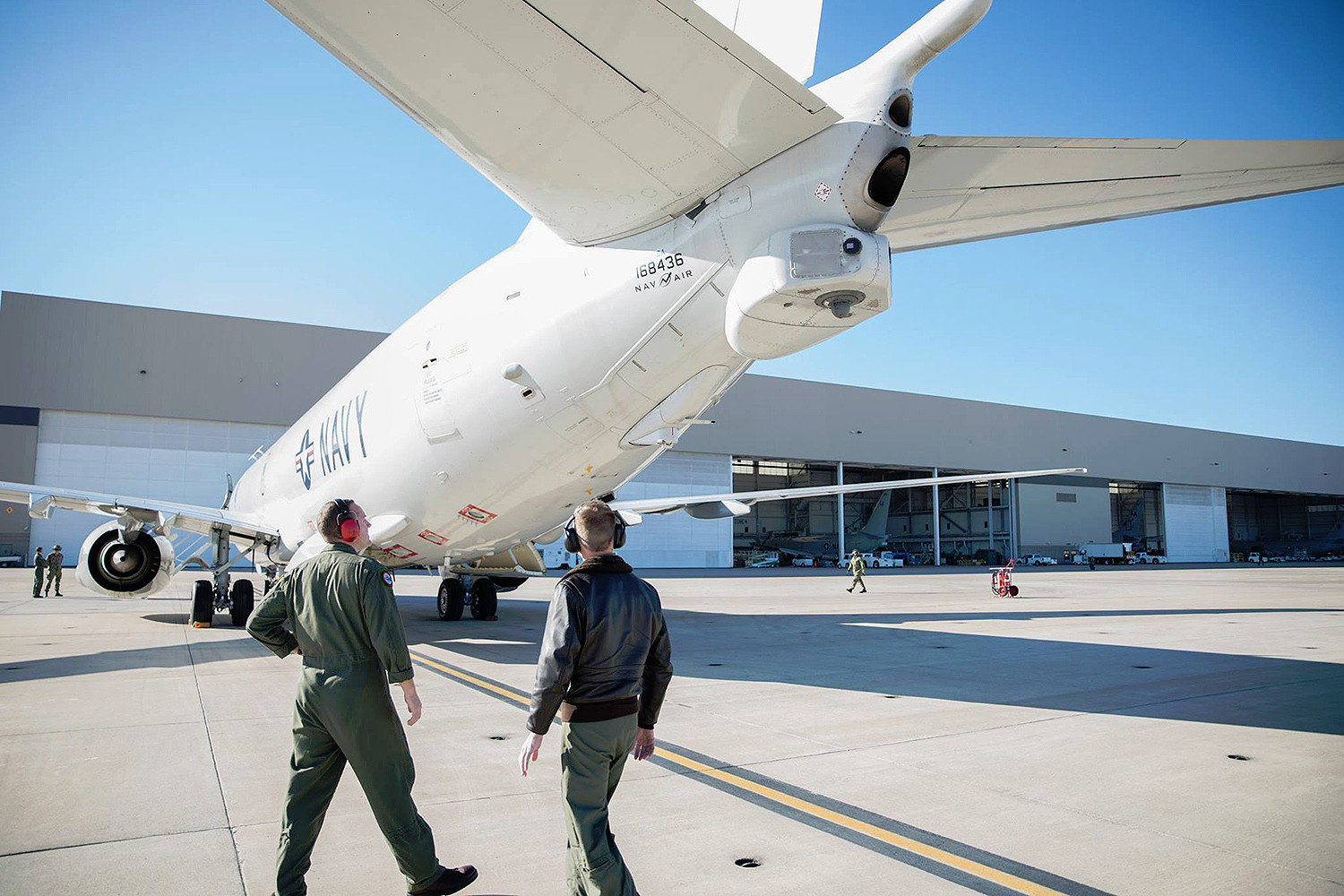
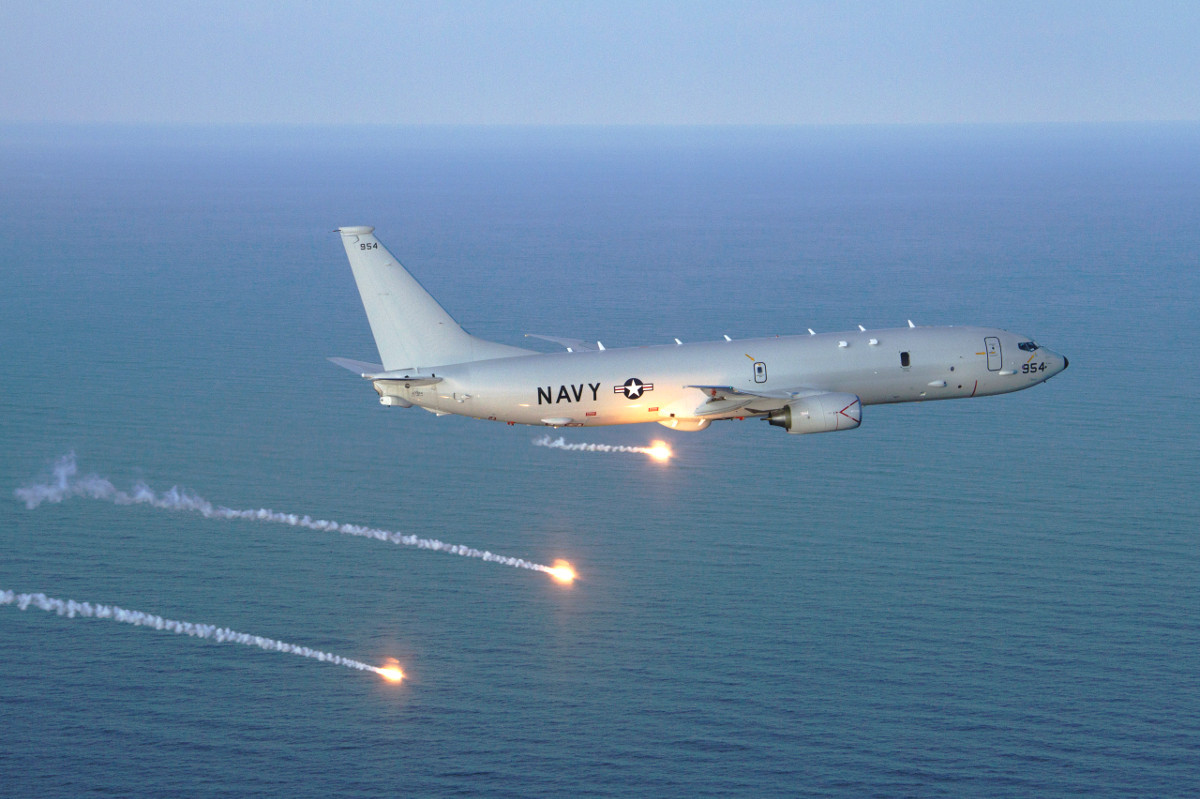
The aircraft does have radar warning receivers to alert the crew that an opponent is trying to or has locked on them. The aircraft’s robust electronic support measures (ESM) package offers an additional way to monitor for threats, as well as to conduct intelligence, surveillance, and reconnaissance missions with regards to enemy emitters, such as radars, too. The P-8A’s countermeasures dispensers can launch cartridges loaded with radar-confusing chaff, but chaff is not commonly carried because the P-8’s radar signature is so big, it would do little to protect the aircraft in most cases. The P-8 does not have any sort of internal electronic warfare jamming system for self-protection, or the ability to carry such a system in a podded form.
It’s interesting to note that there had been an expectation in the past that spiral developments would lead to the integration of radiofrequency countermeasures systems onto the P-8A, but those plans had previously been dropped. “Radio frequency countermeasures are planned for spiral development, with installation provisions (including wiring and mounting pylons) incorporated into all production aircraft,” the Pentagon’s Office of the Director of Test and Evaluation, or DOT&E, wrote in the section on the P-8A in its annual report covering the 2011 Fiscal Year.
DOT&E’s Fiscal Year 2017 report notably lacks any such language regarding the P-8A. “On- and off-board sensors and datalink systems are used to improve tactical situational awareness of expected threat systems,” it says instead.
It’s not surprising that the Navy has returned to the idea of adding more robust radiofrequency countermeasures to the P-8A’s defensive arsenal given the shift in focus across the U.S. military in recent years toward being better prepared for higher-end conflicts, especially against major potential adversaries, such as China or Russia. Poseidons, together with other anti-submarine warfare assets, would be critical in a major conflict in the Pacific region, as well as in and around Europe, where improving Russian and Chinese submarine capabilities present increasing challenges for American forces and their allies and partners.
In a major conflict, the Navy’s P-8A would be very vulnerable to increasingly longer-range sea and ground-based air defenses, as well as enemy combat aircraft equipped with ever-more-advanced air-to-air weaponry. The Iranian shootdown of a U.S. Navy RQ-4A Broad Area Maritime Surveillance. Demonstrator (BAMS-D) drone over the Gulf of Oman in 2019 also underscores the increasing proliferation of these threats to smaller countries, as well, and how they are increasingly a factor around the world, even on routine missions outside of formal conflicts.
This decoy-launching pod is in line with a variety of other efforts the Navy, along with the Air Force, has been pursuing in recent years to help improve the survivability of various platforms that are critical, but also large, slow and non-stealthy. This includes the Poseidons, as well as various intelligence, surveillance, and reconnaissance (ISR) aircraft, aerial refueling tankers, and cargo planes.
The video below shows the interaction between the crew of a Navy P-8A and Chinese forces on a man-made outpost in the disputed South China Sea in 2015.

With all this in mind, it’s not hard to imagine the Navy’s new podded decoy system, which appears to be a relatively low-cost, but a highly-capable defensive tool, finding its ways onto other aircraft within the service and elsewhere across the U.S. military, as well as with allies and partners. Versions of the P-8, itself, are already in service in Australia, India, and the United Kingdom. The Netherlands, New Zealand, Norway, and South Korea all have examples on order, too.
At the same time, this pod will be just one part of a growing electronic warfare ecosystem, that could include additional capabilities within particular aircraft, such as the P-8, working together with other offboard platforms. The Navy is heavily invested in an overarching networked electronic warfare effort, dubbed the Netted Emulation of Multi-Element Signature against Integrated Sensors, or NEMESIS, that is seeking to link together systems on manned and unmanned aircraft, especially autonomous drone swarms, as well as ships and submarines so that they can work together cooperatively. A key focus area of NEMESIS, which you can read more about in this past feature, is on developing ways to create phantom fleets of aircraft and ships, viewed by a range of enemy sensors over a wide area, to confuse opponents and make it difficult for them to respond effectively.
However the Navy’s overarching electronic warfare plans do continue to evolve, in the near term, these podded decoys look set to give the Navy’s P-8As an important defensive capability against radio frequency threats that they really do need.
Contact the author: joe@thedrive.com
